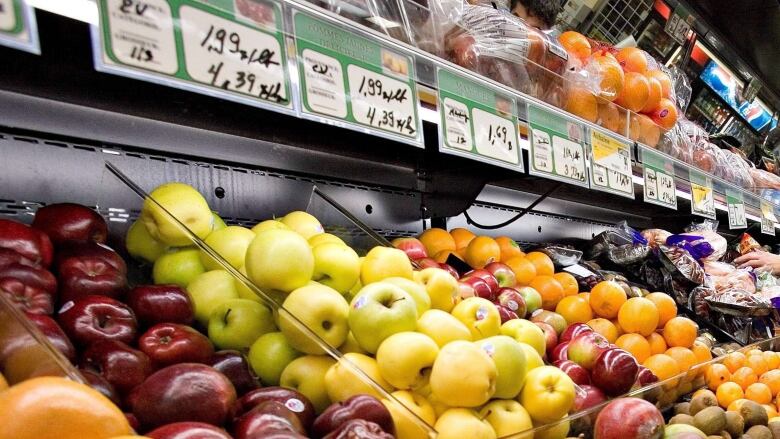6 ways to save money on food as loonie shrinks
Home economist Getty Stewart recommends buying frozen, planning for spring


Stewart, who blogs about food security, said produce such as cauliflower, tomatoes, celery and fruits has gone up in price quite a bit.
"We've become really dependent on getting fruits and veg from down south, so that's where it's hurting the most right now," she said.
She has six tips for weathering the current storm at the grocery store:
-
Buy local
"The closer it's grown to home, the better the prices are," said Stewart.
She recommends root vegetables grown in Manitoba, such as potatoes,beets and carrots.
Winter vegetables are also a great resource, including things like some varieties of squash and cabbage.
Buying what's in season also helps, she said.
-
Swap fresh for frozen
There are lots of frozen fruits and vegetables that are affordable, don't spoil and are great alternatives to fresh.
"Rather than buying fresh strawberries and blueberries right now -- really that's never a great strategy -- opt for berries and fruits in the frozen aisle," she said.
Stewart is also a big fan of frozen broccoli.
-
Swap out traditional ingredients
She also recommends substituting traditional ingredients for more affordable ones.
"Instead of lettuce greens or leafy greens, try a carrot and apple salad, a classic three bean salad or a carrot or edamame salad," said Stewart.
There are alsomany recipes that take advantage of staples like beans, "like a butter chickpea recipe or a lentil soup," saidStewart.
"Cook with seeds like quinoa. Just try looking up some recipes from your favouritefoodies. There are recipes galore."
-
Create a meal plan . . .
Having a plan is a great way to make sure you're using what you have while it's fresh and is a great way to make sure nothing goes to waste, Stewart said.
-
. . . but don't be afraid to improvise
If you get to the store and there's a really great deal on something, take advantage of it.
Stewart said buyers shouldn't pass up an opportunity to eat fresh fruits and vegetables just because it doesn't fit into their meal plan.
-
Support a CSA
Stewart thinks high-prices could be here to stay.
"It doesn't look like things are going to get any better any time soon, so it might be time to look at longer-term strategies for the spring and summer," she said.
She recommends looking into community supported agriculture (CSA) programs in your area.
Aside from supporting farmers in your community, they're also really convenient.
"You can sign up now and then have fresh fruit and veggies, locally grown, delivered to your house," Stewart said.












_(720p).jpg)


 OFFICIAL HD MUSIC VIDEO.jpg)
.jpg)



























































































